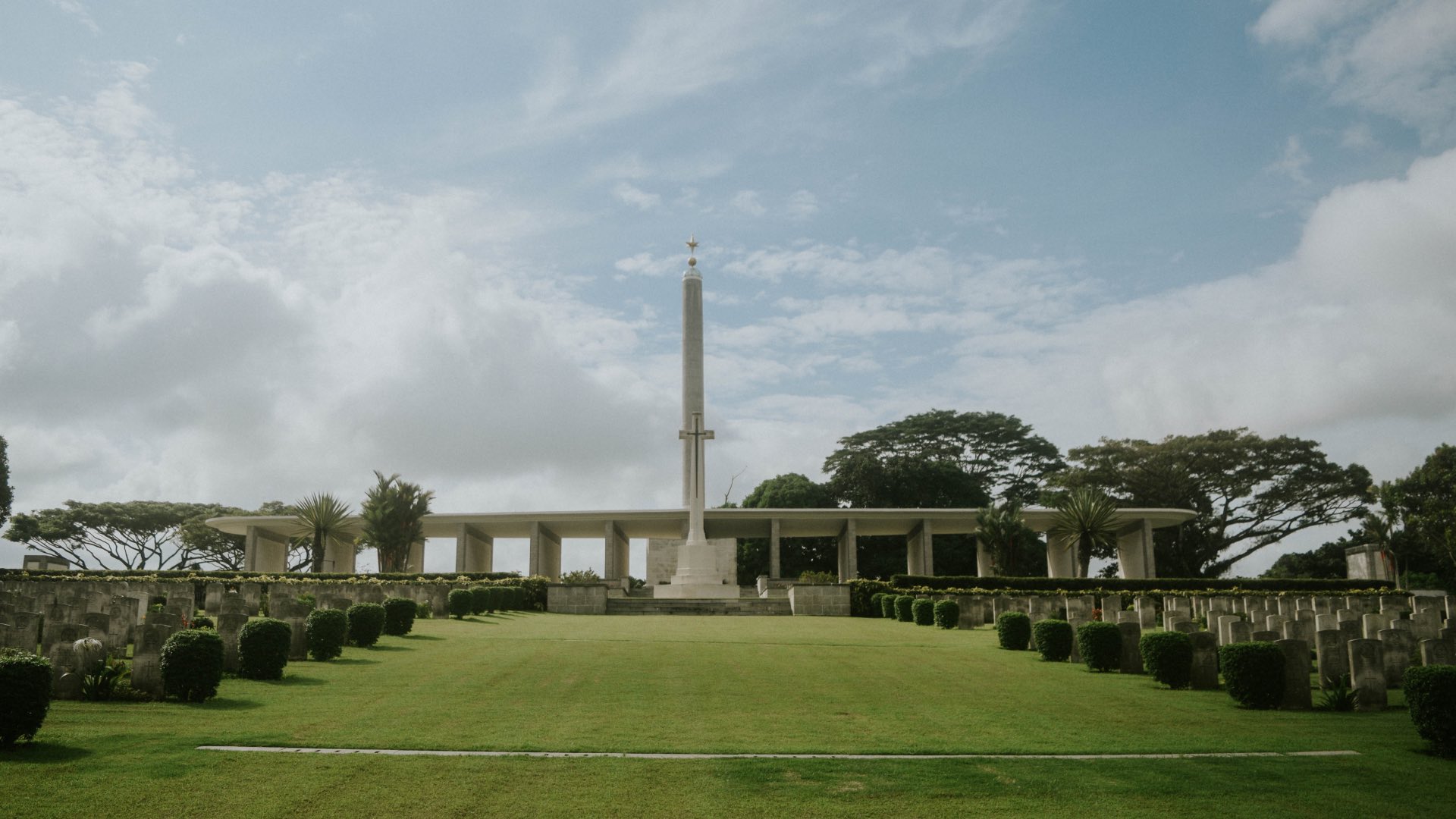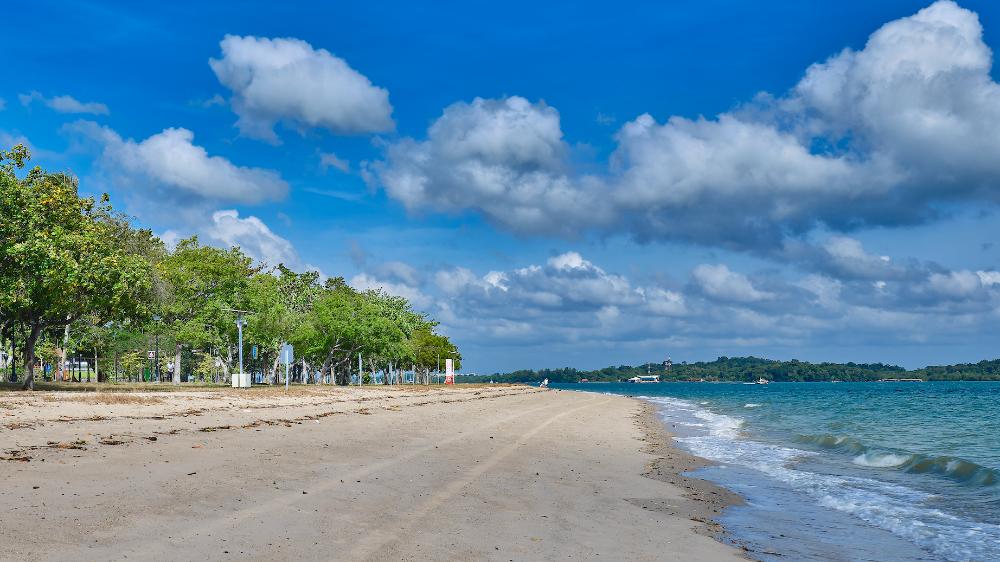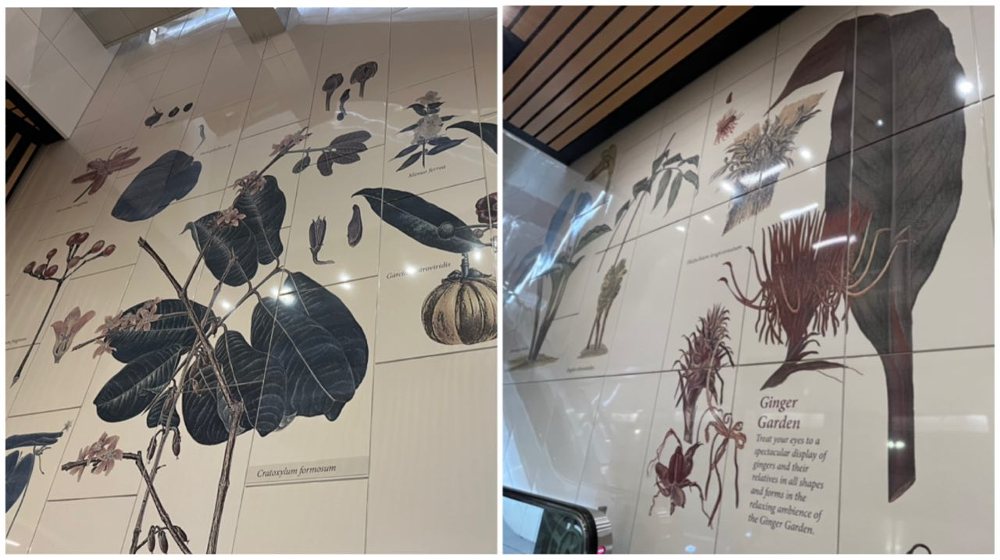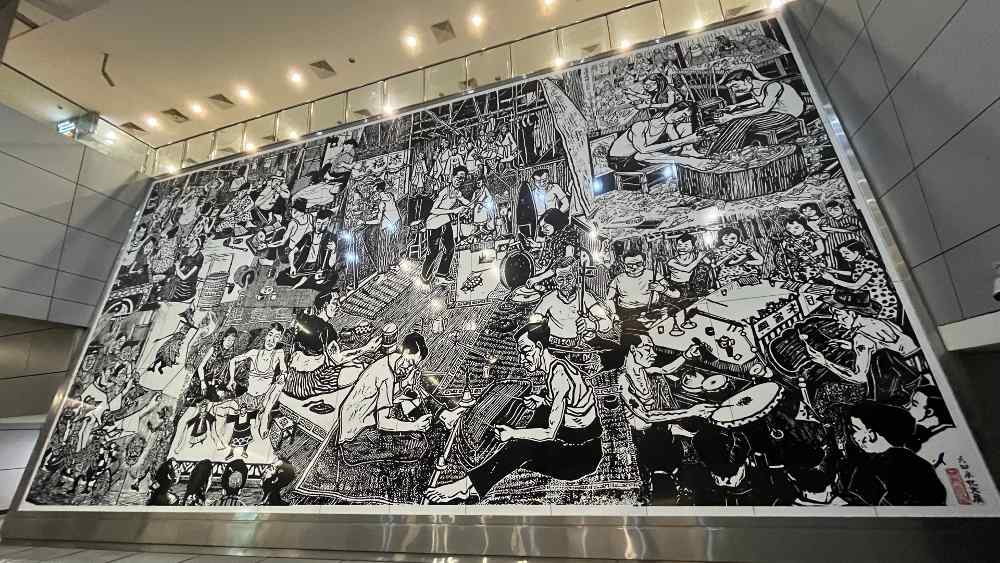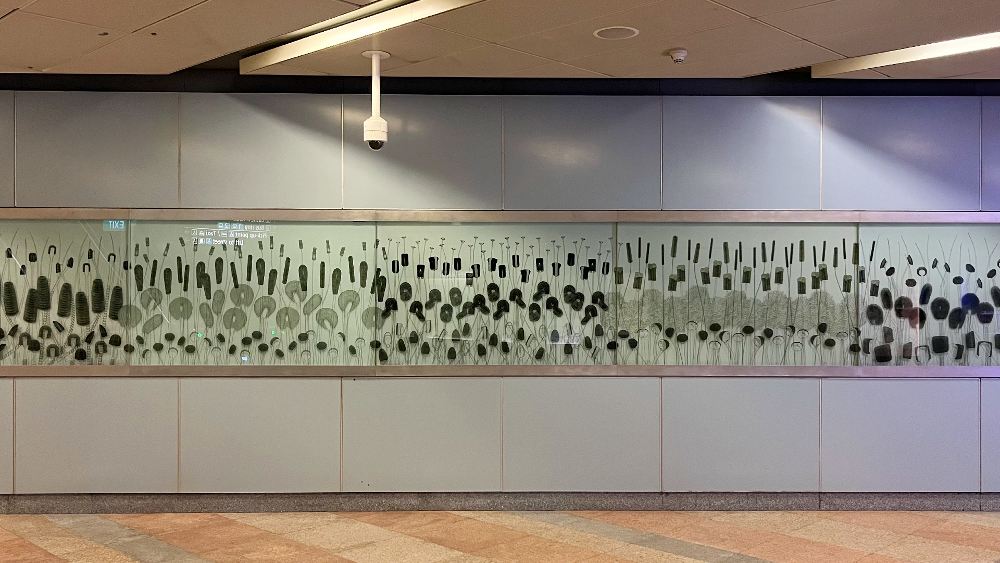Adventures At Home: Let's Rediscover Our Valiant Past
8 December 1941. Today in Singapore's history, 80 years ago, 17 Japanese bombers attacked Singapore at 4.30am, damaging the Seletar and Tengah airfields, with a number of bombs also falling on Raffles Place. The onslaught claimed 61 lives, and injured more than 700.
World War II (WWII) had come to Singapore.
Singapore eventually fell to Japanese rule on 15 February 1942 and our country was renamed “Syonan-To” (Light of the South in Japanese). The war finally ended with the signing of the Instrument of Surrender on 12 September 1945.
In this very special edition of Adventures At Home, we explore the historic sights all around our Little Red Dot that played a part in our valiant past in the National Heritage Board’s “Singapore in World War II” Heritage Trail, and rediscover the courageous efforts of the men and women who fought bravely to protect our nation 70 years on since the Japanese invasion.
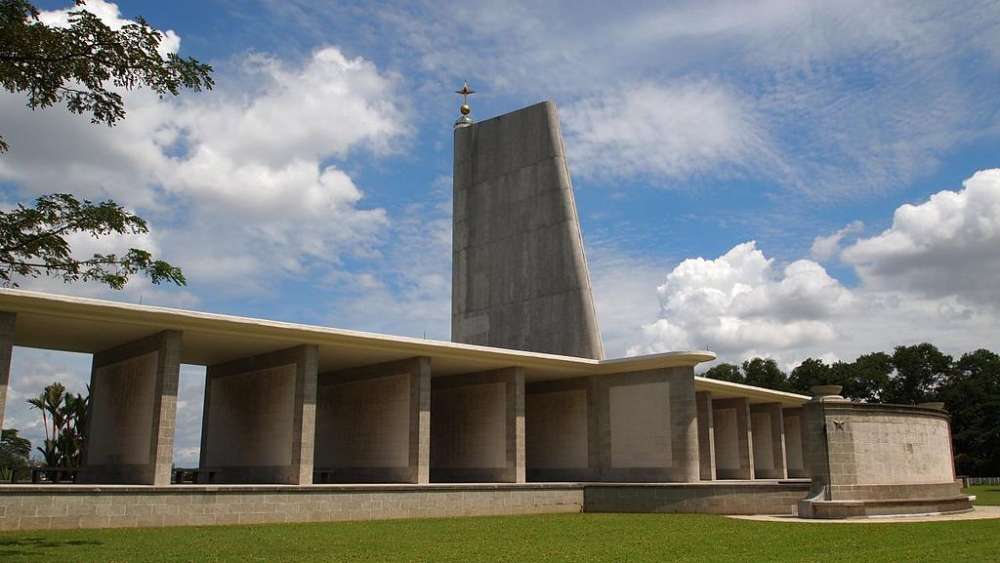 IMAGE: WALTER LIM, CC BY 2.0, VIA WIKIMEDIA COMMONS
IMAGE: WALTER LIM, CC BY 2.0, VIA WIKIMEDIA COMMONS
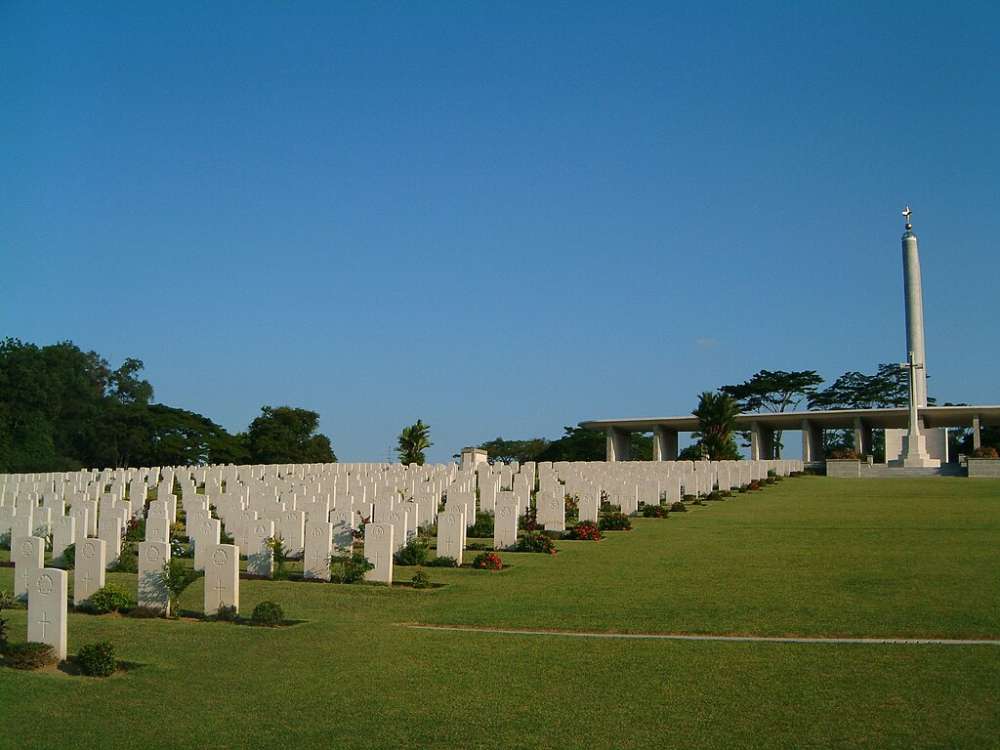 IMAGE: CALVIN TEO, CC BY-SA 3.0, VIA WIKIMEDIA COMMONS
IMAGE: CALVIN TEO, CC BY-SA 3.0, VIA WIKIMEDIA COMMONS
Kranji War Memorial
We kickstart our trip in the northwest, at this serene hillside cemetery. The Kranji War Memorial honours the men and women who lost their lives in the line of duty during WWII. It was officially opened on 2 March 1957 by the Commonwealth War Graves Commission (CWGC). The CWGC is an intergovernmental organisation that maintains 23,000 gravesites around the world of commonwealth soldiers that died in both World Wars.
A memorial service is held annually on the Sunday closest to Remembrance Day (11 November) to pay tribute to the fallen.
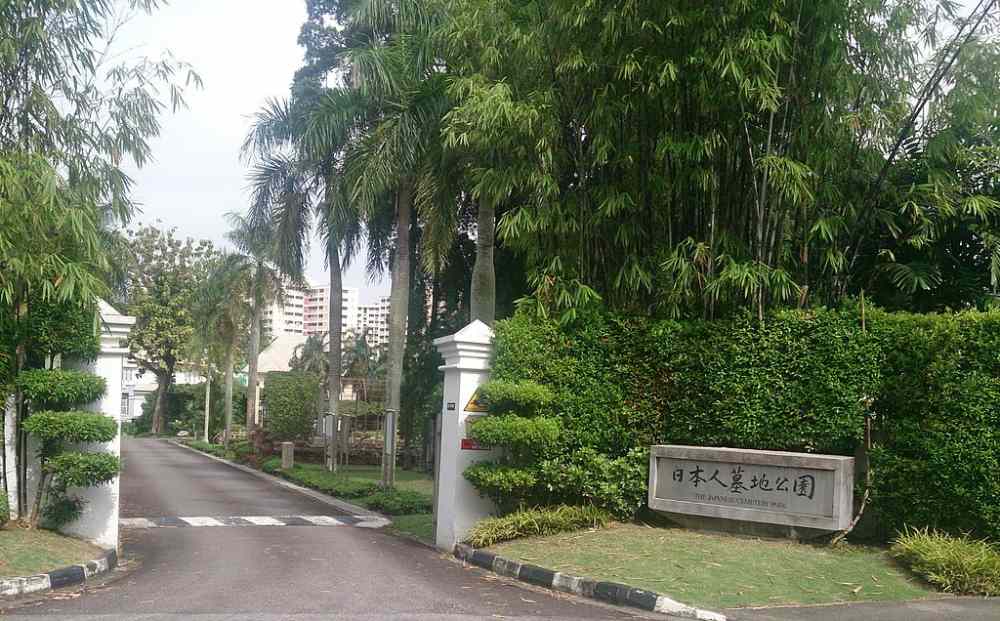 IMAGE: PROJECTMANHATTAN, CC BY-SA 3.0, VIA WIKIMEDIA COMMONS
IMAGE: PROJECTMANHATTAN, CC BY-SA 3.0, VIA WIKIMEDIA COMMONS
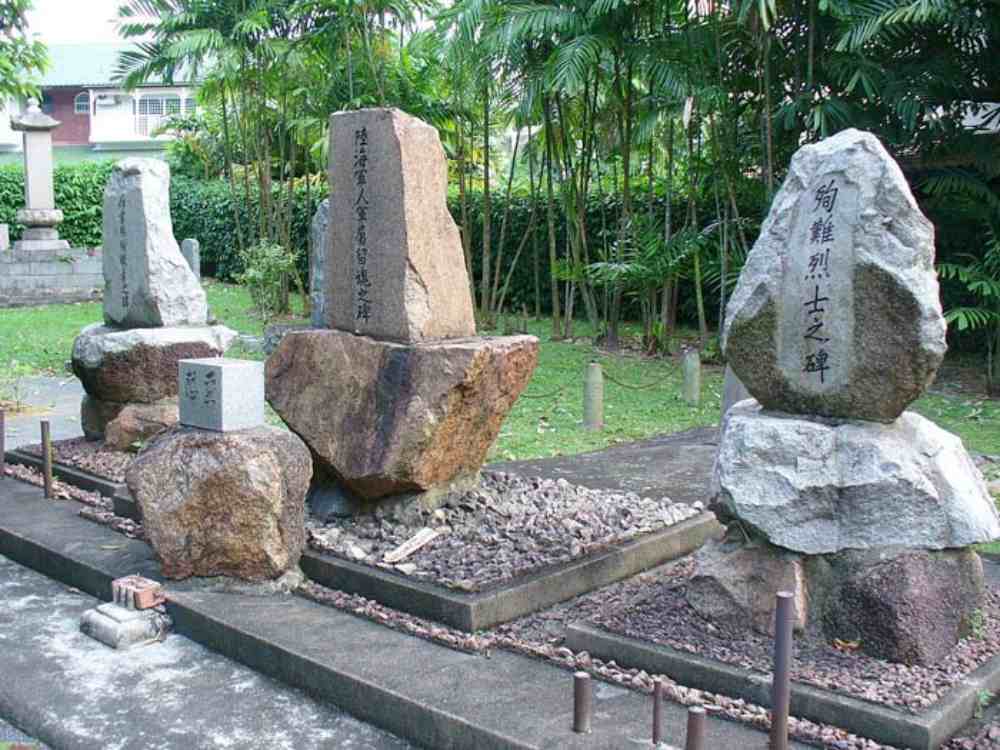 IMAGE: ALDWINTEO AT EN.WIKIPEDIA, CC BY-SA 3.0, VIA WIKIMEDIA COMMONS
IMAGE: ALDWINTEO AT EN.WIKIPEDIA, CC BY-SA 3.0, VIA WIKIMEDIA COMMONS
Japanese Cemetery Park
Tucked away In the midst of a quiet private residential estate in Yio Chu Kang is the largest cemetery in Southeast Asia. It was founded in 1891 by Tagajiro Futaki, a plantation owner and philanthropist for the "karayuki-san" (Japanese for "people who go overseas"). The first Japanese resident in Singapore was buried here.
This was the final resting place for many a Japanese soldier too, including Field Marshal Count Hisaichi Terauchi who led the Japanese invasion into Southeast Asia. It was designated as a memorial park in 1987, with its upkeep maintained by the Japanese Association of Singapore.
Former Ford Factory
This was the place where the British delegation officially surrendered to the Japanese after seven days of fighting. The Former Ford Factory was the first car assembly plant when it opened in October 1941. Today, it houses a permanent exhibition showcasing the events and memories of the British surrender, Japanese occupation, and legacies of the war.
The Former Ford Factory was gazetted as a National Monument on 15 February 2006, the same day the exhibition was opened.
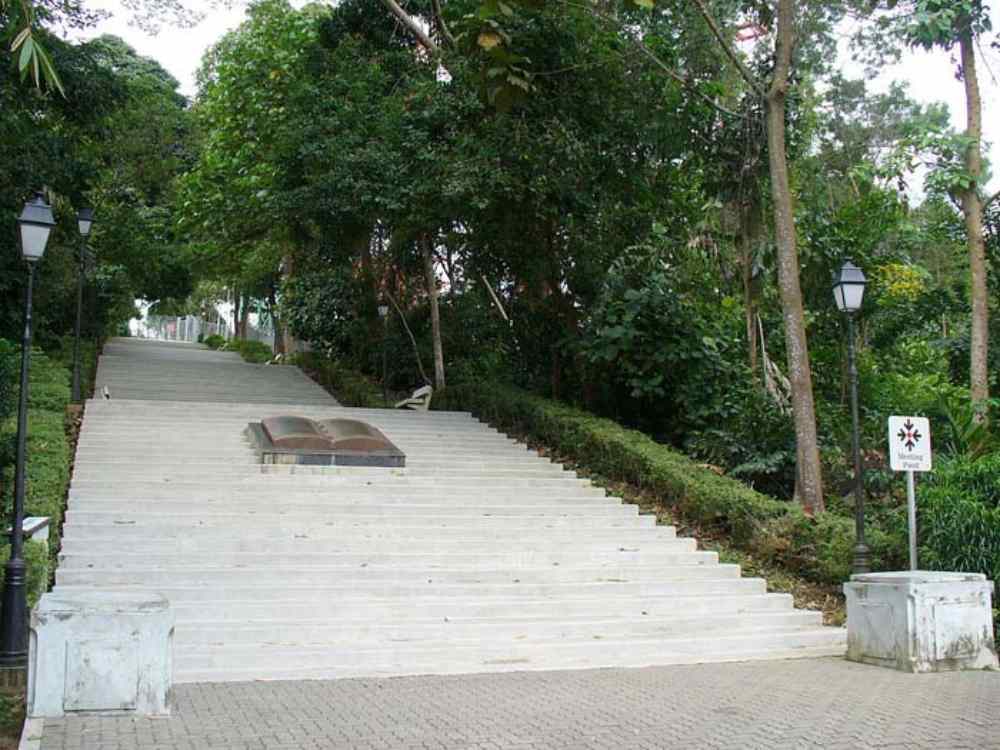 IMAGE: ALDWINTEO AT ENGLISH WIKIPEDIA, CC BY-SA 3.0, VIA WIKIMEDIA COMMONS
IMAGE: ALDWINTEO AT ENGLISH WIKIPEDIA, CC BY-SA 3.0, VIA WIKIMEDIA COMMONS
Bukit Batok Memorial
Head up to Bukit Batok Hill and you’ll find a white stairway that leads to... well, nothing. But during the Japanese occupation, there were two memorials here: the first was Syonan Chureito, a Japanese memorial built by 500 British and Japanese POWs to honour the Japanese who died in the battle for Singapore; the other was the Allied Memorial requested by the POWs for their own war-dead, built behind the Chureito.
The memorials were destroyed after the Japanese surrender, but a new plaque was erected by the National Heritage Board and the Singapore Tourist Promotion Board in 1981 to commemerate the history of this site.
Reflections At Bukit Chandu
Trek up to this colonial bungalow to discover the stories of our brave Malay Regiment soldiers, especially of Lieutenant Adnan Saidi’s heroic last stand in the Battle of Pasir Panjang against 13,000-strong Japanese forces.
Here’s a sneak peek of what you can expect at Reflections at Bukit Chandu.
The Battlebox (Fort Canning Command Centre)
At the top of Fort Canning Hill, you'll find a museum called The Battlebox. Built in 1936, it was the actual WWII British underground command centre and HQ of Malaya Command - the army that defended Singapore and Malaya.
You can book a guided tour here to learn about the events that led to the British army deciding to surrender to the Japanese on 15 February 1942, and manoeuvre your way within the labyrinth of rooms and corridors in this 9m underground base.
National Gallery
Our National Gallery was the site of the Japanese surrender ceremony that marked the end of WWII in Southeast Asia. Admiral Lord Louis Mountbatten, Supreme Commander of the Southeast Asia Command, accepted the Japanese surrender by General Itagaki inside City Hall Chamber on 12 September 1945.
The National Gallery was originally called the Municipal Building when it was completed in 1929. Renamed City Hall in 1951 after Singapore was officially conferred city-status, it was gazetted as a National Monument in 1992, and reopened as the National Gallery we know today in 2015.
The Cenotaph
This war memorial at Esplanade Park was built to honour volunteers who died during WWI, but was rededicated as a WWII memorial. The Prince of Wales (and later Edward the VIII) unveiled it on 31 March 1922 with Louis Mounbatten - the same person who received the Japanese surrender in September 1945.
Queen Elizabeth II and Richard Nixon have laid wreaths here during their Singapore visits. It was gazetted as a National Monument in December 2010.
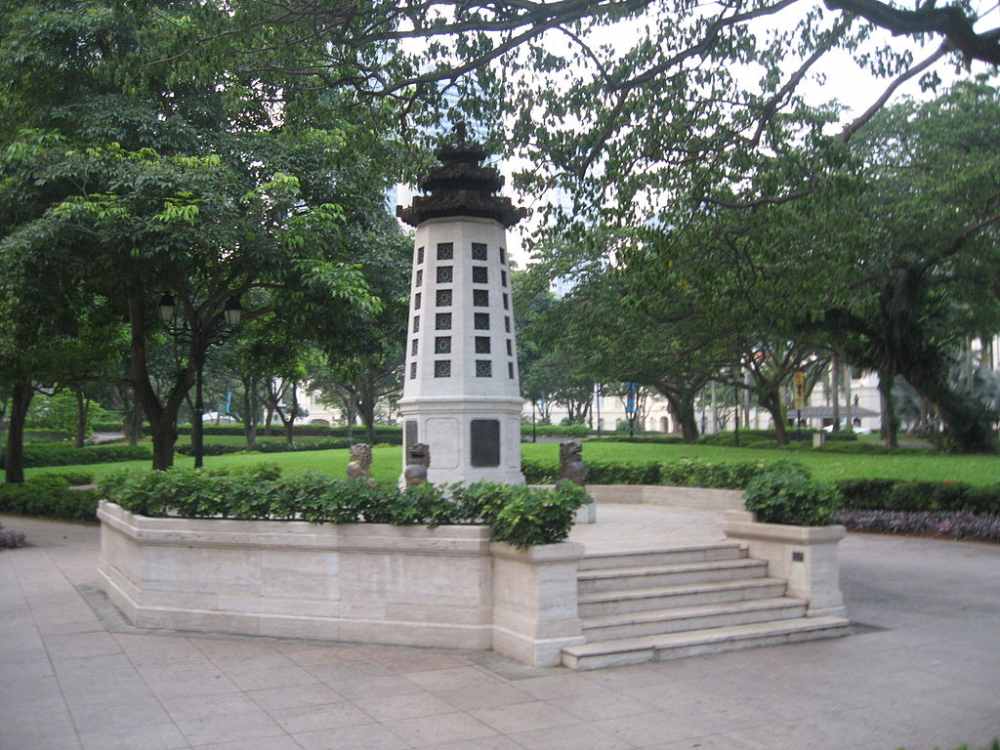 IMAGE: TERENCE ONG, CC BY-SA 3.0, VIA WIKIMEDIA COMMONS
IMAGE: TERENCE ONG, CC BY-SA 3.0, VIA WIKIMEDIA COMMONS
Lim Bo Seng Memorial
Another National Monument at Esplanade Park, this memorial is dedicated to war hero Lim Bo Seng. He organised more than 10,000 men for the British government to man essential services and to construct defences around the island (they even blew up the Causeway to stop the invading Japanese), and helped establish an intelligence network in Malaya as part of Force 136.
You can read more about his story on Roots.sg.
Civilian War Memorial
The Civilian War Memorial (CWM) at Beach Road commemorates the civilians who died during the Japanese Occupation. The four parallel pillars symbolise our four major races, and the joining of the pillars at the base signifies unity and shared suffering.
Prime Minister Lee Kuan Yew unveiled the monument on 15 February 1967, and on the same day every year (also Total Defence Day), a memorial ceremony is held here to honour the lives lost in the war.
Changi Chapel and Museum
Reopened in May 2021, the Changi Chapel and Museum tells the stories of the prisoners of war and civilians interned in Changi Prison during the Japanese occupation.
On display are many personal effects donated by former POWs and their families - there’s even a recreated Changi cell, offering a sense of how the internees lived. Look out for the 400-page diary written by Arthur Westrop as if he was addressed to his wife, and a Kodak Baby Brownie camera hidden by Sergeant John Ritchie Johnston during his incarceration.
Happening history sia
If you’re interested to explore the rich history of our valiant past, you can follow NHB’s "Singapore in World War II" trail. Get your trail map and guide here.
For the latest updates on Wonderwall.sg, be sure to follow us on TikTok, Telegram, Instagram, and Facebook. If you have a story idea for us, email us at [email protected].







